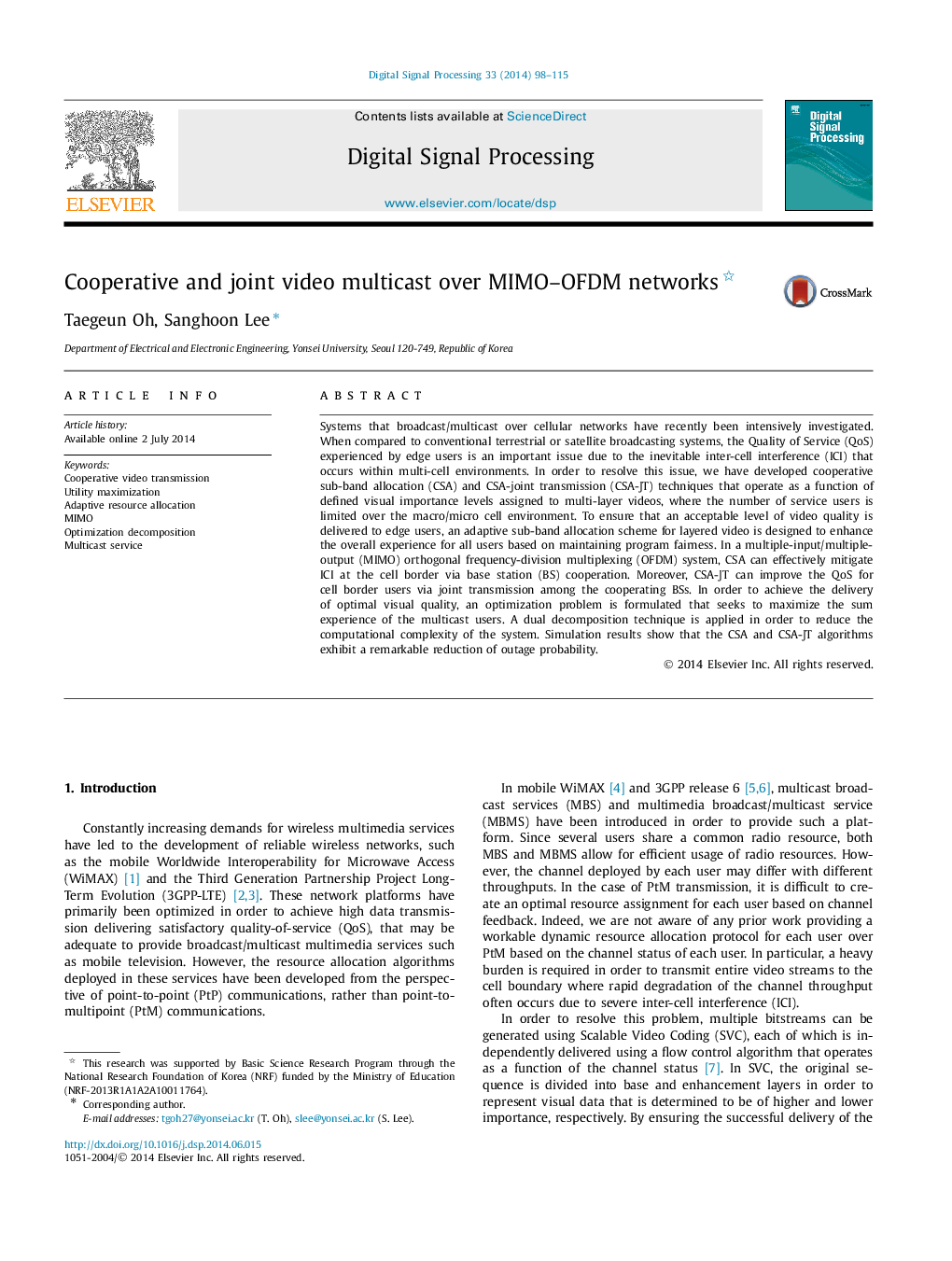| Article ID | Journal | Published Year | Pages | File Type |
|---|---|---|---|---|
| 564657 | Digital Signal Processing | 2014 | 18 Pages |
Systems that broadcast/multicast over cellular networks have recently been intensively investigated. When compared to conventional terrestrial or satellite broadcasting systems, the Quality of Service (QoS) experienced by edge users is an important issue due to the inevitable inter-cell interference (ICI) that occurs within multi-cell environments. In order to resolve this issue, we have developed cooperative sub-band allocation (CSA) and CSA-joint transmission (CSA-JT) techniques that operate as a function of defined visual importance levels assigned to multi-layer videos, where the number of service users is limited over the macro/micro cell environment. To ensure that an acceptable level of video quality is delivered to edge users, an adaptive sub-band allocation scheme for layered video is designed to enhance the overall experience for all users based on maintaining program fairness. In a multiple-input/multiple-output (MIMO) orthogonal frequency-division multiplexing (OFDM) system, CSA can effectively mitigate ICI at the cell border via base station (BS) cooperation. Moreover, CSA-JT can improve the QoS for cell border users via joint transmission among the cooperating BSs. In order to achieve the delivery of optimal visual quality, an optimization problem is formulated that seeks to maximize the sum experience of the multicast users. A dual decomposition technique is applied in order to reduce the computational complexity of the system. Simulation results show that the CSA and CSA-JT algorithms exhibit a remarkable reduction of outage probability.
